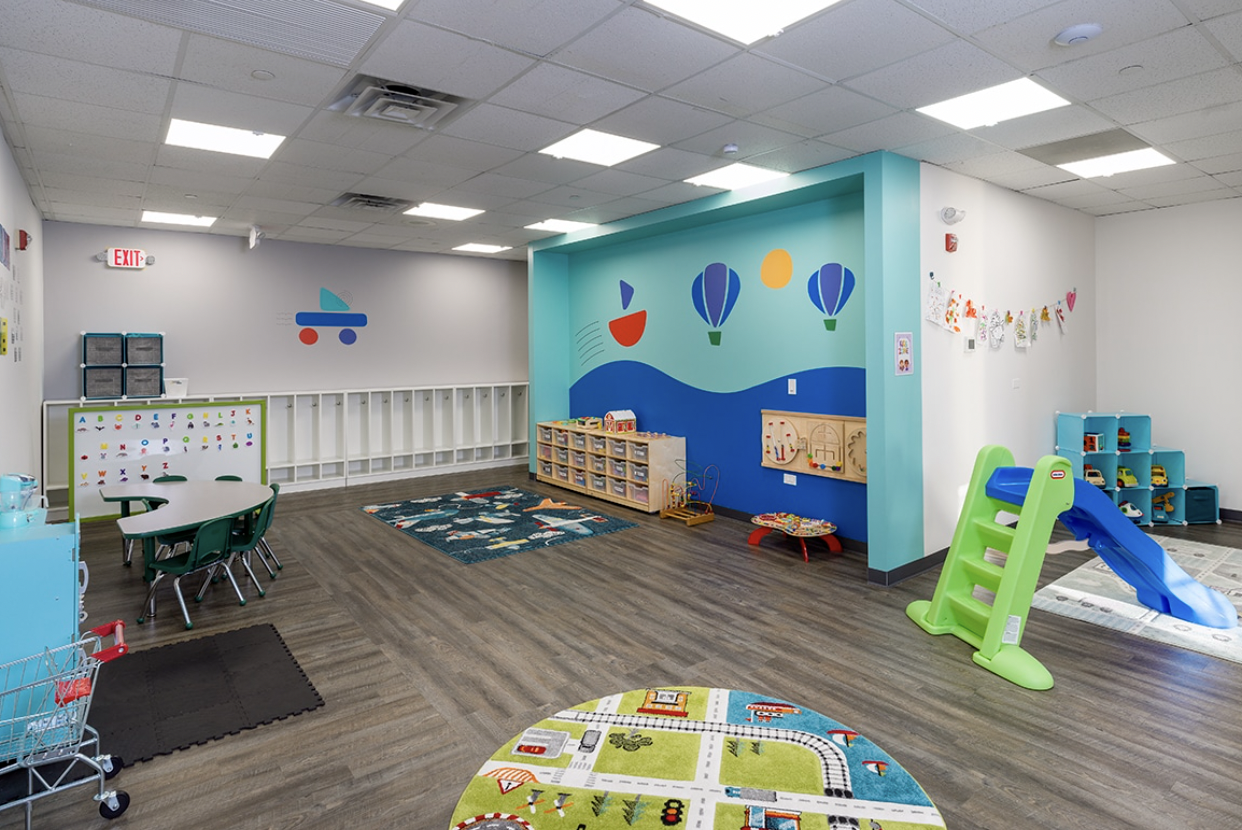Roche’s subcutaneous OCREVUS one-year data demonstrates near-complete suppression of clinical relapses and brain lesions in patients with progressive and relapsing forms of MS
- Results from the Phase III study showed that subcutaneous (SC) injection was consistent with IV infusion and demonstrated near-complete suppression of relapse activity (97%) and MRI lesions (97.2%) through 48 weeks
- The twice-yearly, 10-minute SC injection has the potential to expand the usage of OCREVUS to treatment centres without IV infrastructure or with IV capacity limitations
- U.S. FDA and EMA accepted filings based on the data from OCARINA II, with EU approval anticipated mid-2024 and U.S. approval anticipated September 2024
Basel, 17 April 2024 – Roche (SIX: RO, ROG; OTCQX: RHHBY) announced today data from the Phase III OCARINA II study (S31.006) of OCREVUS® (ocrelizumab), an investigational twice-yearly, 10-minute subcutaneous (SC) injection. Results showed near-complete suppression of clinical relapses and brain lesions in people with relapsing or primary progressive multiple sclerosis (RMS or PPMS) which reinforce the potential benefits of this investigational formulation. Treatment with OCREVUS SC led to rapid and sustained B-cell depletion in the blood. The data will be presented as an oral presentation at the 76th American Academy of Neurology (AAN) Annual Meeting taking place April 13-18 in Denver and has been recognised as an abstract of distinction by the AAN scientific committee.
“With a full year of data demonstrating near-complete suppression of relapse activity and minimal progression of lesion development, this 10-minute subcutaneous OCREVUS injection shows results that are consistent with the long-established benefits of intravenous OCREVUS,” said Levi Garraway, M.D., Ph.D., Roche’s chief medical officer and head of Global Product Development. “We look forward to continuing ongoing conversations with regulatory bodies worldwide to potentially bring an additional treatment option to more people living with MS, in a shorter injection time.”
Updated, longer-term results showed that OCREVUS SC injection (920 mg; n=236; both treatment arms [OCR SC/SC and OCR IV/SC]) resulted in near-complete suppression of relapse activity (97.2% had no relapse during the treatment phase) and MRI up to 48 weeks with an ARR of 0.04, and most patients having no T1 gadolinium-enhancing (T1 Gd+) lesions and no new/enlarging T2 lesions. These lesion types are markers of active inflammation and burden of disease, respectively. Additionally, in exploratory patient reported outcome measures (n=52) patients reported a high level of satisfaction (92.3% were satisfied or very satisfied) and convenience (90.1% felt it was convenient or very convenient) with OCREVUS SC injection.
“Updated results from OCARINA II further underline the potential benefits of subcutaneous OCREVUS for patients with both relapsing and progressive forms of MS,” said Scott Newsome, D.O., lead author, Johns Hopkins University School of Medicine. “Patients treated with subcutaneous OCREVUS experienced appropriate B-cell suppression and impressive near-complete suppression of new inflammatory disease activity. These results demonstrate the potential of subcutaneous OCREVUS as a treatment option that can be matched to the individual needs of people with MS and healthcare professionals.”
Additional data continued to show that the safety profile of OCREVUS SC injection was consistent with the well-established safety profile of OCREVUS IV infusion. No new safety signals were identified for OCREVUS SC. The most common adverse events in the OCREVUS SC group were injection reactions (51.5% of all exposed patients), including erythema (34.8%; skin redness or irritation), pain (17.2%), swelling (9.4%) and pruritus (5.6%; skin itching), all of which were either mild or moderate and none of which led to treatment withdrawal. A total of seven serious AEs were experienced by three (2.6%) and four (3.4%) patients in the OCREVUS SC injection and IV infusion groups, respectively.
The OCARINA II abstract was selected as an abstract of distinction by the AAN, based on the quality of the study and the interest to the neurology community.
The twice-yearly, 10-minute SC injection has the potential to expand the usage of OCREVUS to treatment centres without IV infrastructure or with IV capacity limitations. Data from the Phase III OCARINA II trial were submitted to health authorities around the world following the first presentation of these results during ECTRIMS-ACTRIMS 2023. Both the European Medicines Agency (EMA) and U.S. Food and Drug Administration (FDA) have accepted Roche’s submissions, with a target decision date of mid-2024 for the EMA and September 2024 for the FDA.
More than 300,000 people with MS have been treated with OCREVUS IV globally. OCREVUS IV is approved in more than 100 countries across North America, South America, the Middle East, Eastern Europe, Asia, Australia, Switzerland, the United Kingdom and the EU.
Roche is committed to advancing innovative clinical research programmes to broaden the scientific understanding of MS, further reducing disability progression in RMS and PPMS and improving the treatment experiences for those living with the disease. There are more than 30 ongoing OCREVUS clinical trials designed to help us better understand MS and its progression.
About the subcutaneous formulation of OCREVUS (ocrelizumab)
The investigational subcutaneous (SC) formulation combines OCREVUS with Halozyme Therapeutics’ Enhanze® drug delivery technology.
OCREVUS is a humanised monoclonal antibody designed to target CD20-positive B cells, a specific type of immune cell thought to be a key contributor to myelin (nerve cell insulation and support) and axonal (nerve cell) damage. This nerve cell damage can lead to disability in people with MS. Based on preclinical studies, OCREVUS binds to CD20 cell surface proteins expressed on certain B cells, but not on stem cells or plasma cells, suggesting that important functions of the immune system may be preserved.
The Enhanze drug delivery technology is based on a proprietary recombinant human hyaluronidase PH20 (rHuPH20), an enzyme that locally and temporarily degrades hyaluronan – a glycosaminoglycan or chain of natural sugars in the body – in the SC space. This increases the permeability of the tissue under the skin, allowing space for large molecules like OCREVUS to enter, and enables the SC formulation to be rapidly dispersed and absorbed into the bloodstream.
OCREVUS IV is the first and only therapy approved for both RMS (including relapsing-remitting MS [RRMS] and active, or relapsing secondary progressive MS [SPMS], in addition to clinically isolated syndrome [CIS] in the U.S.) and PPMS. OCREVUS IV is administered by intravenous infusion every six months. The initial dose is given as two 300 mg infusions given two weeks apart. Subsequent doses are given as single 600 mg infusions.
About the OCARINA II study
OCARINA II (NCT05232825) is a Phase III, global, multicentre, randomised study evaluating the pharmacokinetics, safety and radiological and clinical effects of the subcutaneous (SC) formulation of OCREVUS compared with OCREVUS intravenous (IV) infusion in 236 patients with relapsing MS (RMS) or primary progressive MS (PPMS). Initial results shared at ECTRIMS-ACTRIMS 2023 demonstrated that the trial met the primary endpoint of non-inferiority in area under the serum concentration time curve (AUC) from day 1 to 12 weeks after SC injection compared to IV infusion. Secondary endpoints include maximum serum concentration (Cmax) of OCREVUS, the total number of active, gadolinium-enhancing T1 lesions at 8 and 12 weeks, and new or enlarging T2 lesions at 12 and 24 weeks, as well as safety and immunogenicity outcomes. Exploratory endpoints include patient-reported outcomes.
About multiple sclerosis
Multiple sclerosis (MS) is a chronic disease that affects more than 2.8 million people worldwide. MS occurs when the immune system abnormally attacks the insulation and support around nerve cells (myelin sheath) in the central nervous system (brain, spinal cord and optic nerves), causing inflammation and consequent damage. This damage can cause a wide range of symptoms, including muscle weakness, fatigue and difficulty seeing, and may eventually lead to disability. Most people with MS experience their first symptom between 20 and 40 years of age, making the disease the leading cause of non-traumatic disability in younger adults.
People with all forms of MS experience disease progression – permanent loss of nerve cells in the central nervous system – from the beginning of their disease even if their clinical symptoms aren’t apparent or don’t appear to be getting worse. Delays in diagnosis and treatment can negatively impact people with MS, in terms of their physical and mental health, and contribute to the negative financial impact on the individual and society. An important goal of treating MS is to slow, stop and ideally prevent disease activity and progression as early as possible.
Relapsing-remitting MS (RRMS) is the most common form of the disease and is characterised by episodes of new or worsening signs or symptoms (relapses) followed by periods of recovery. Approximately 85% of people with MS are initially diagnosed with RRMS. The majority of people who are diagnosed with RRMS will eventually transition to secondary progressive MS (SPMS), in which they experience steadily worsening disability over time. Relapsing forms of MS (RMS) include people with RRMS and people with SPMS who continue to experience relapses. Primary progressive MS (PPMS) is a debilitating form of the disease marked by steadily worsening symptoms but typically without distinct relapses or periods of remission. Approximately 15% of people with MS are diagnosed with the primary progressive form of the disease. Until the FDA approval of OCREVUS, there had been no FDA-approved treatments for PPMS.
About Roche in Neuroscience
Neuroscience is a major focus of research and development at Roche. Our goal is to pursue ground-breaking science to develop new treatments that help improve the lives of people with chronic and potentially devastating diseases. Roche and Genentech are investigating more than a dozen medicines for neurological disorders, including MS, spinal muscular atrophy, neuromyelitis optica spectrum disorder, Alzheimer’s disease, Huntington’s disease, Parkinson’s disease, acute ischemic stroke, Duchenne muscular dystrophy and Angelman syndrome. Together with our partners, we are committed to pushing the boundaries of scientific understanding to solve some of the most difficult challenges in neuroscience today.
About Roche
Founded in 1896 in Basel, Switzerland, as one of the first industrial manufacturers of branded medicines, Roche has grown into the world’s largest biotechnology company and the global leader in in-vitro diagnostics. The company pursues scientific excellence to discover and develop medicines and diagnostics for improving and saving the lives of people around the world. We are a pioneer in personalised healthcare and want to further transform how healthcare is delivered to have an even greater impact. To provide the best care for each person we partner with many stakeholders and combine our strengths in Diagnostics and Pharma with data insights from the clinical practice.
In recognising our endeavour to pursue a long-term perspective in all we do, Roche has been named one of the most sustainable companies in the pharmaceuticals industry by the Dow Jones Sustainability Indices for the fifteenth consecutive year. This distinction also reflects our efforts to improve access to healthcare together with local partners in every country we work.
Genentech, in the United States, is a wholly owned member of the Roche Group. Roche is the majority shareholder in Chugai Pharmaceutical, Japan.
For more information, please visit www.roche.com.
All trademarks used or mentioned in this release are protected by law
Roche Global Media Relations
Phone: +4 61 688 8888 / e-mail: media.relations@roche.com
| Hans Trees, PhD Phone: +41 79 407 72 58 |
Nathalie Altermatt Phone: +41 79 771 05 25
|
| Simon Goldsborough Phone: +44 797 32 72 915 |
Karsten Kleine Phone: +41 79 461 86 83
|
| Nina Mählitz Phone: +41 79 327 54 74 |
Kirti Pandey Phone: +49 172 6367262
|
| Dr. Rebekka Schnell Phone: +41 79 205 27 03 |
Sileia Urech Phone: +41 79 935 81 48 |
Attachment
















